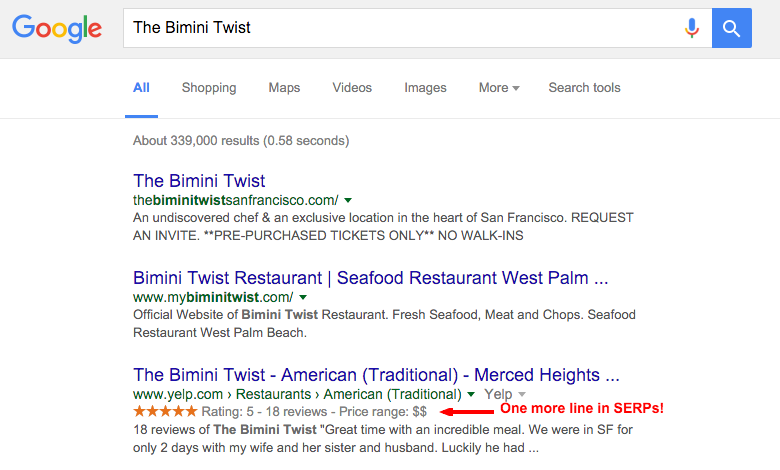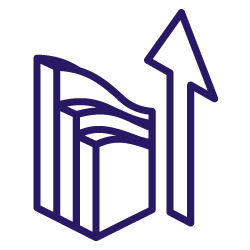Getting more search engine organic traffic is still and will always be one of the main objectives of any website owner. Organic traffic replies to specific SEO rules that need to be carefully followed. While it exists several SEO optimizations that can help you improve your organic traffic, some more technical SEO tricks may also help.
In this article, we will be listing 5 technical SEO tricks to improve organic traffic, rankings and revenues.
1 • Create a sitemap for fresh content
Content is one of the 3 main Google ranking factors. As a matter of fact, having a blog can help you get your content indexed faster. An active blog – relying on qualitative and insightful content, and backed by authoritative links – will help you improve your rankings and thus your organic traffic. Also, long-form copies (above 1200 words) tend to rank higher and be crawled more often.

Impact of word count of crawl frequency
To sum up, fresh content equals better indexing. But a question bringing another one, if you publish a lot of content, you should think about creating an optimized sitemap. Build a standard XML sitemap using the code below:
<url>
<loc>http://www.example.com/mypage</loc>
<lastmod>2017-10-10</lastmod>
<changefreq>monthly</changefreq>
<priority>1</priority>
</url>
Then, submit it under Google Search Console. Once the sitemap is uploaded, look for additional errors and suggestions provided by Google. Fix them and then regularly update your sitemap in order to include new pages.
2 • Use video and structured data to improve user experience and CTR
In 2014, Cisco stated that video made 64% of all internet traffic. In 2015, Searchmetrics was releasing a white paper quoting that 55% of all keyword searches in the U.S. return at least one video blended into Google’s web search results and that 8 out 10 of those videos belonged to YouTube. And in 2016, Cisco was also sharing that online videos will account for more than 80% of all consumer internet traffic by 2020.
This year, Google has started testing auto-playing video directly in the search results. Those trends shows a strong interest from Google regarding content like video.
It seems like Google counts such metrics while ranking websites in the search results. Anything that the end user prefers will surely get a boost, and videos are preferred by the user as compared to text content. Indeed, 500 million hours of videos are watched on YouTube every day.
An effective strategy would be to have an optimized mix of text and video-based content on webpages to rank them on search results. Here are some good practices regarding video-based content:
- Use how-to videos
- Let search engines index your video
- Use descriptive keywords
- Create a video sitemap
- Insert a video transcript
On the other hand, structured data are also a real asset to increase your organic traffic and improve your CTR. They refers to values that help search engines categorize and index your content in a creative ways for the user. While there is no direct correlation between those data and a SEO improvement, structured data can really help you boost your visibility in SERPs.
Those codings help search engines to understand what your content is about. If you deal with organisations’ reviews for instance, you could get a nice rich snippet in SERPs using the Ratings or Organisation markup.

After you have added structured data, test them with the help of the Structured Data Testing Tool so that there are no errors in the markup code.
3 • Optimize your content for RankBrain
Rankbrain is part of the latest Google algorithm updates made since 1998. The artificial intelligence system has become the third ranking factor and helps analyze search results. Rankbrain is actually able to learn what a page is about and how it relates to keywords people are searching for and then display the most relevant results.
RankBrain can have an impact on your keywords campaigns. When you are defining your keywords, you are looking for relevant terms that respond to customers queries. This is how a successful SEO strategy works. And logically, if you are picking keywords your audience is not searching for, you campaign will have no chance to succeed. This is where RankBrain can play a role.
Rankbrain’s algorithm is now learning and constantly evolving. As a result, your SEO campaign has to be more mind thinking and adaptable to changes in the search engine rankings landscape.
Google always wants to provide their users with web pages that satisfy the purpose of their searches. If you are optimizing your online presence by offering quality content and relevant services, you will be ranked higher on Google search results. Keyword stuffing is then still prohibited.
Here are a few guidelines for finding synonyms for your main keyword:
- Find keywords with the same meaning as the principle keyword, but with different spelling and structure
- Use a natural-sounding way. Make sure that the new keywords don’t override the main keyword that you want to rank for. The new key phrases are only there to give additional descriptions
- Only use other keywords when necessary and make sure your content flows naturally when a person reads it!
4 • Fix 404 pages with 301 redirect to avoid losing organic traffic
The 404 error “Page not found” is the error page displayed whenever someone asks for a page that is simply not available on your site.
Use an SEO crawler like Oncrawl to sort out all URLs returning a 404 and then export the list. Here you can see that 182 URLs return a 404.
Then, you can 301 redirect them to their new versions so that you avoid losing valuable traffic. Also use a rel=canonical tag for the newly created page so that all the link value is effectively spreading to the new page.
5 • Optimizing Hreflang tags
Hreflang tags aim at cross-referencing pages that are similar in content but target different audiences according to their language and/or country. It ensures that the correct content and pages will be shown to the right users when they will be searching the Google search version you are targeting.
The example below shows two hreflang tags that target French speakers in France and French speakers in Canada:
- Both of these tags would appear on both pages. This would ensure that Canadians searching on google.ca would find the page targeting Canadians, and French people searching on google.fr would find the page targeting French.
- It works in a similar way as a canonical tag does to show when a duplicate version of a page exists. But in this case, it helps Google index local content easier within local search engines. It also helps to pass trust across sites and improve the way Google crawls these pages. To know more about how errors you should not make when it comes to hreflang tags, you can check our previous article.
We hope these 5 tips will give you new insights to leverage your organic traffic. Please share with us your best practices in the comment section.


Hi Emma,
Some great advice there. It’s amazing how often people ignore the obvious stuff like 404s, even if they have dozens of them…which is typically what happens.
Love the idea of a sitemap for fresh content too – not something I’d ever since discussed before.
The most frequent error I see in technical SEO are the on-page elements, particularly title and meta tags. People are still stuffing them full of keywords, or just not bothering with them at all, even though they do have an impact on ranking.
Anyway, just my 1/50th of a dollar :-)
Hey Emma, Thanks for listing out tips to improve organic traffic. This blog helps me much to improve and have to recorrect myself to achieve organic results. I loved the way you have shared the information which is easy to understand. I would like to read and learn more articles from your blog so, please do share more posts..!